Social media listening — or monitoring, for that matter — can be extremely valuable for marketers planning their upcoming campaigns. According to the latest PR Trends and Challenges Report, 46% of PR professionals use social listening to improve the outcomes of their media campaigns (as well as measure their impact).
Still, the one area where most marketers fail to see the benefits of social listening is brand humanization. Why? Primarily because consumers want to interact with and support relatable businesses.
💡 Read Social Listening Guide: Proven Hacks, Strategies, and Tools
Research from 2018 shows that when consumers feel connected to an organization, they’re likely to spend more on the brand’s products and services. They will also remain loyal to said brands. Moreover, 76% will actively choose to buy from those brands over their competitor. A benefit that’s becoming increasingly important in a world where customer loyalty is dying out.
So, if you’re looking for tips on how to use social media listening to humanize your brand and make it more relatable, read on to learn the top strategies for collecting and using follower data to boost the efficacy of your marketing efforts.
Track Consumer Sentiment
One of the most significant benefits of using social media listening is that it can help you track (and understand) consumer sentiment.
Essentially, brands looking to devise successful marketing strategies must continually monitor consumer sentiment, trends, and relevant industry developments. Understanding how your target audience feels — and not just your target audience but all consumers — is extremely valuable.
Customer sentiment analysis can help ensure that your marketing efforts are relevant. It can give you the insights you need to remain in touch with current events. It can help you compose marketing messages that reflect your prospects’ wants, needs, and feelings. Ultimately, this makes them much more appealing and likely to inspire conversions.
The easiest way to employ sentiment analysis is to use a tool like Determ. Thanks to its insightful tracking options and notification features, you can continually keep up to date with what your audience is thinking and feeling and make necessary changes to your marketing strategies to ensure their success.
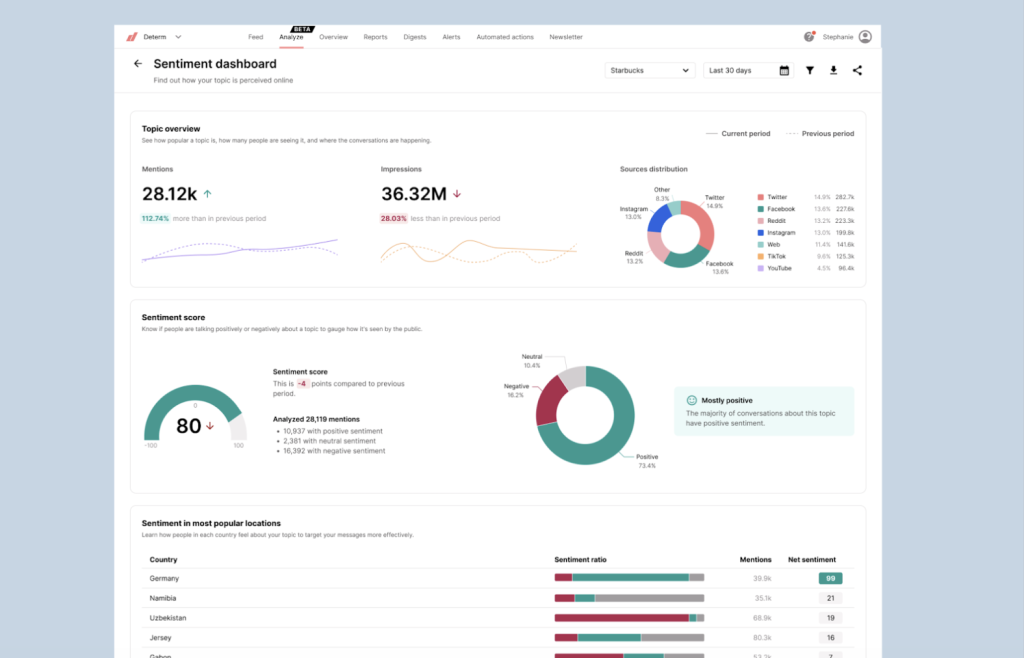
In addition to monitoring conversations around your brand, don’t forget to employ social media listening to keep up to date with the latest news in your industry. By doing something as simple as following a few trustworthy organizations that research consumer sentiment — McKinsey, Deloitte, Edelman, and PWC are all great places to start — you can ensure you don’t miss any new research results that you can use to improve your content strategies.
Check out how Lanteria does it on its LinkedIn profile. This brand uses statistics from new HR research studies to capture its audience’s attention. Then, it composes social media content around those statistics that create a connection between positive results and the brand’s solution. Furtheron, they direct followers to fully optimized landing pages where they can learn more about using the Lanteria SaaS solution to achieve similar results.

Get to Know Your Audience Better
Social media listening on a macro scale can be an excellent tool for making your brand more relevant (and less likely to make a faux pas). However, the benefits of social listening are even more pronounced when you apply the strategy on a micro-scale. Especially if you’re trying to humanize your organization and build relationships with your target audience.
One of the best ways to utilize social listening is for audience research. Ultimately, the better you know your followers, the easier it will be for you to tailor your content, messages, and unique sales propositions in ways that will resonate with your ideal customers.
If you’re not entirely convinced the effort is worth the payoff, consider that personalizing the customer experience delivers significant benefits. According to a survey from Salesforce, 66% of consumers expect companies to understand their specific needs. And 73% of buyers want brands to deliver more personalized experiences.
So, how can you employ social media listening data to better understand your audience? Well, there are a few excellent tactics you can play around with.
Read How to Use Social Listening For Market Research
Identify consumer pain points and display empathy
One of the best implementations of social listening to humanize your brand is employing it to identify your audience’s pain points and display empathy.
Knowing what issues your potential customers have will give you insights into the types of products you need to develop. But more importantly, it will provide an opportunity to nurture your brand’s reputation around the fact that you care about the challenges your target audience faces on a daily basis.
If you look at scientific research studying how brand trust is earned, you’ll find that it consists of three pillars. These are competence, integrity, and benevolence. In other words, consumers want to purchase from businesses that can exhibit expertise and deliver the promised quality. Businesses that are willing to put their customers’ needs before profits.
So, if you want to humanize your brand through social listening, do your best to figure out your target audience’s frustrations and see if you can provide (ideally zero-cost) solutions. For a great example of a business doing this, check out Going. This company does a lot to position itself as a customer-first brand. Especially with its insightful guides on booking cheap flights.
However, by employing social listening, Going also identified the most common pain points its followers were frustrated about. So, it created a series of posts revolving around free travel advice. Like the one on how to find cheap flights and use search tools like Google Flights. These posts show that Going cares about helping followers have better travel experiences, regardless of whether they’re customers or not.

Connect with followers over shared values
In 2023, a significant percentage of consumers made shopping decisions based on ESG values.
According to research from McKinsey and Nielsen IQ, products with ESG claims saw a 28% cumulative growth over the past five years, compared to 20% for products without similar proclamations. Moreover, PWC found that over 70% of buyers would spend more on sustainable products. Additionally, many people are willing to pay between 5% and 30% more on locally sourced, recycled, or biodegradable items.
So, where does social media listening tie in with this data? Well, social listening practices can help you learn more about your audience’s values. Then, you can utilize that data to create posts that your prospects can relate to. And that will humanize your brand.
For a great example of how to do this, check out Lego’s Build to Give campaign. They realized that their audience cares about the inclusivity of play and creativity. So the brand used social media to invite followers to participate in a mission to deliver Lego sets to one and a half million children in need.
What’s great about this campaign is that Lego effectively identified a value shared by every member of its gigantic audience. More importantly, it used the information to do something for others. This has not only humanized the brand but also made it even more loveable in the eyes of its customers.
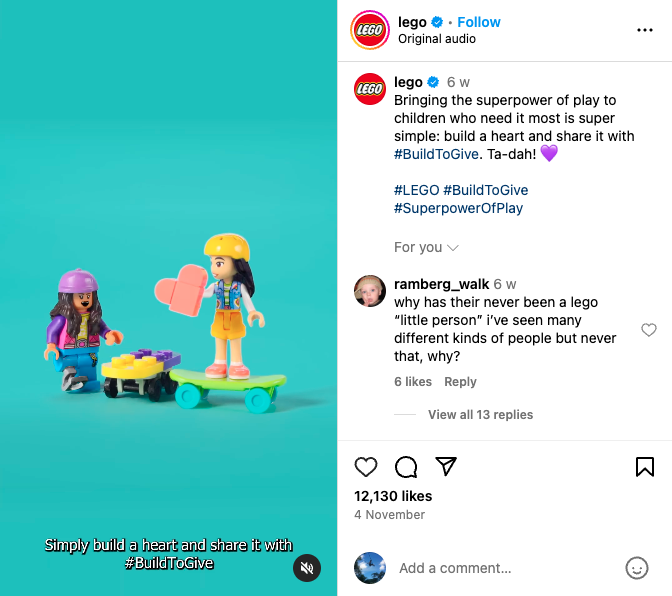
Understand your audience’s communication preferences
Finally, if you decide to employ social listening to research your audience, know that doing so can be a great way to learn more about the types of communication your followers see as relatable.
Research from the NN Group reveals that consumers react best to casual, conversational, and enthusiastic communication. So, it’s a good idea to reflect how your audience speaks if you want them to perceive your brand as desirable, trustworthy, and relatable.
Humanizing your brand’s voice doesn’t have to be complicated. On the contrary, it can be as simple as identifying terms, phrases, and expressions your ideal customers use in day-to-day communication. And adding them to your copy (where appropriate). Or it can mean discovering unique forms of communication — like GIFs or emojis. You can use them to share your ideas and add a touch of personality to your brand’s dealings with customers.
Read How Determ’s Word Cloud Helps You Find Brand Information
For a great example of a brand that found its voice through social listening, check out Digestive Warrior.
They figured out how their ideal customers communicated about digestive health and their diagnoses (as well as the type of messages they found inspirational). And they cultivated their voice to resonate better with their target audience.
Furthermore, by continually tracking consumer sentiment, the Digestive Warrior team also realized that the health and wellness industry seriously lacks a strong presence of expert voices. That’s why it created a series of YouTube interviews with influential doctors and scientists. In this way, they ensured that the brand’s followers get the most up-to-date info on digestive health, relevant to their individual experiences.

Find Opportunities to Engage with Followers (and Non-Followers)
One of the most significant benefits of social media listening is that it can help uncover opportunities to engage with potential clients.
After all, research shows that (most) buyers don’t purchase from brands after a sinsalegle interaction. Instead, the typical sales cycle requires, on average, eight touches. This shows just how essential it is for you to reach and interact with your audience.
The great thing about social listening is that it can help you do this more proactively.
Instead of waiting for prospects to come to you, you can identify conversations around your products, brand, or even just related to your niche. And do your best to help these users solve their pain points.
Read How Can Social Media Monitoring Inform Your Product and Sales Teams
Reply to comments
The easiest way to engage with your followers is to reply to comments on topics related to what your business does. It may not seem like much — especially if you’re trying to humanize your brand. But research shows that consumers genuinely pay attention to whether a brand engages with followers.
A 2022 survey revealed that 45% of consumers believe it’s essential for businesses to reply to comments. But more importantly, 48% said that they use those comments to learn what existing customers think of the brands they’re considering.
With this in mind, start using your social media accounts for two-way communication. Use social listening to identify relevant conversations. Then, do your best to participate in those conversations in meaningful ways that will benefit your audience. For a great example of how you can do this, check out the Twitter feed of Justin Brown, the founder of Primal Video. You’ll notice that the brand employs social listening to identify conversations related to its niche. Then, it does its best to contribute to those conversations with valuable advice that genuinely helps its target audience.

Provide customer support
Social media has significantly changed the landscape of customer service.
According to Khoros, approximately 50% of people who engage with brands on social media do so regarding customer care concerns. And even though they expect businesses to help solve their pain points, there are many times that this doesn’t happen.
According to research from Calabrio, 45% of consumers feel like brands aren’t responding quickly enough to their inquiries. 37% are frustrated by the lack of human agents. And only 45% of consumers feel like they are being heard and understood by brands when communicating their pain points.
Combine this with the fact that 80% of people feel more connected to brands when customer service solves their problem and that 30% of consumers would be willing to pay more for excellent service. Suddenly, it becomes clear that brands looking to build a relatable (and customer-oriented) reputation must employ all available channels to provide assistance to their existing (and future) clients.
The thing about social listening is that it enables businesses to achieve the desired effect in a way that doesn’t rely on consumers taking the first step. For instance, if you check out Spotify’s customer service Twitter profile, you’ll notice that it doesn’t just offer support to customers who’ve reached out. This brand uses social monitoring to identify all conversations around the brand’s product and provide help where it looks like it’s needed.
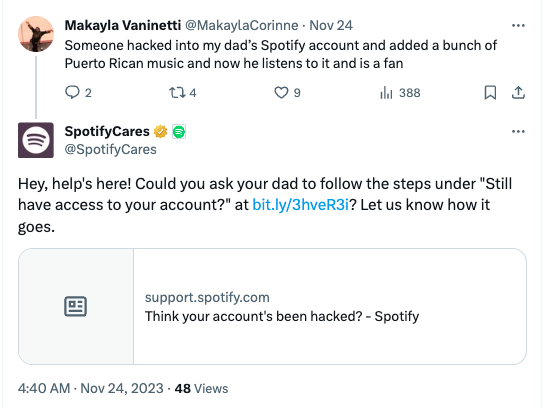
Source UGC you can transform into social proof
If you look at data regarding what content consumers trust the most, you’ll notice that UGC continually ranks as the highest-rated format in trustworthiness and authenticity.
So, if you’re trying to humanize your brand — or just point out that it’s a business run by real people who care about their customers — it’s super important that you include user-generated content in your marketing strategies.
The great thing is that, by employing social media listening, you can identify brand or product mentions that you can transform into impactful instances of social proof. Aura is a brand that does this spectacularly. By listening to Twitter mentions, this business can identify valuable user feedback. When the customer impressions are positive, Aura can click the Repost button to use the mention as UGC. When the mention discusses an issue or includes a support request, the brand can effectively help customers resolve their problems, automatically showing that the account is run by real humans and instantly boosting customer experience (and loyalty).

Identify collaboration opportunities
Even though most of the tips discussed in this guide cover social media listening tips for tracing (and reacting to) brand/product mentions, there’s one additional benefit that can genuinely help humanize your brand. And that’s identifying collaboration opportunities.
If you explore strategies for humanizing your brand, you’ll see that working with influencers offers several benefits. In addition to helping you maximize reach and build user trust, influencer marketing can also help present your brand as more relatable, approachable, and overall human.
Not sure that influencer marketing is effective at humanizing your business? Just consider that 81% of consumers reported becoming interested in a brand/product after seeing an influencer post, primarily because they found these spokespeople relatable (unlike celebrities).
So, if you can, it’s not a bad idea to employ social listening to trace influential voices in your industry. Then, you can reach out to them and create influencer marketing campaigns that will help attract new audiences and add more credibility to your business.
One business that does this really well is Transparent Labs. By continually keeping an eye on content creators who could be a good fit for the brand’s influencer marketing campaigns, Transparent Labs has established relationships with multiple trustworthy collaborators. And their ambassadorship doesn’t just boost conversions. More importantly, it continues to build the brand’s credibility as a business that makes natural and science-backed supplements for athletes.
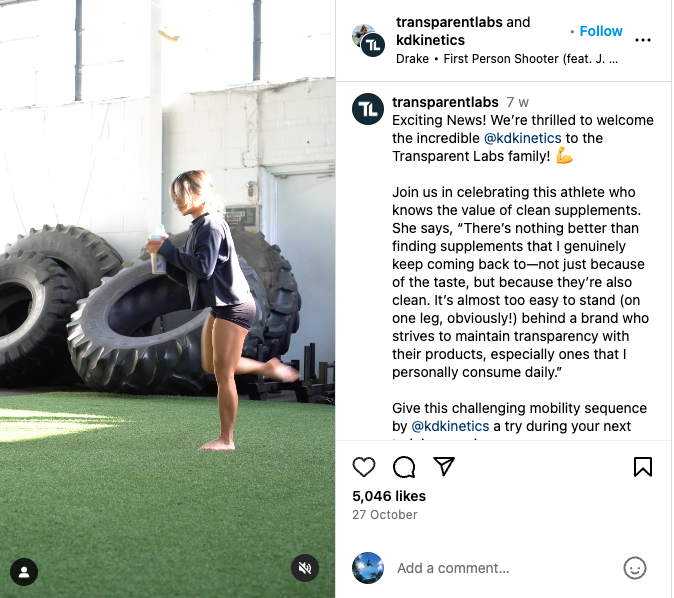
Uncover new content ideas
Last but not least, as you explore ways to use social media listening, don’t forget that by keeping an eye on your target audience’s conversations and comments, you can effectively uncover new content ideas that will help humanize your brand and make it more relatable.
For instance, something as simple as identifying common consumer questions can be hugely helpful in directing your future content marketing efforts. Or, if you’re looking to add a dose of interactivity to your social media marketing (which is an excellent tactic for boosting engagement), you can create posts that are direct reactions to the feedback you’ve received from followers.
This is precisely what Wildpier does on its Instagram account, where it regularly creates reels in response to follower questions and comments. In combination with the fact that all the posts on the account feature videos made by the owner of the brand, the tactic results in a collection of highly relatable posts. Moreover, the brand’s content actively testifies to the fact that Wildpier is, in fact, a business run by humans dealing with the same challenges faced by their audience.
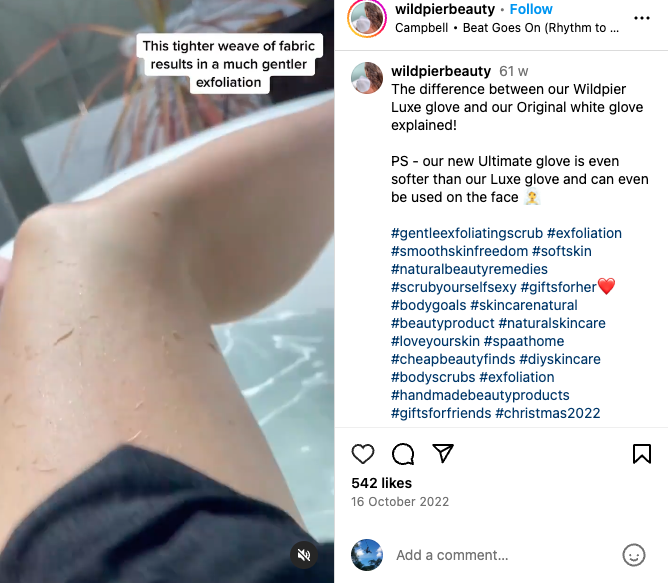
In Closing
Producing and distributing relatable social media content is an excellent first step toward making your brand more human. However, if you want to ensure that what you’re publishing genuinely appeals to your audience and makes them feel more connected to your brand, do your best to employ social listening.
The tactics described in this guide won’t take too much time. However, their impact will be tremendous — regardless of whether your ultimate goals include enhancing your brand’s reputation, boosting conversions, or improving your existing customers’ experiences.


